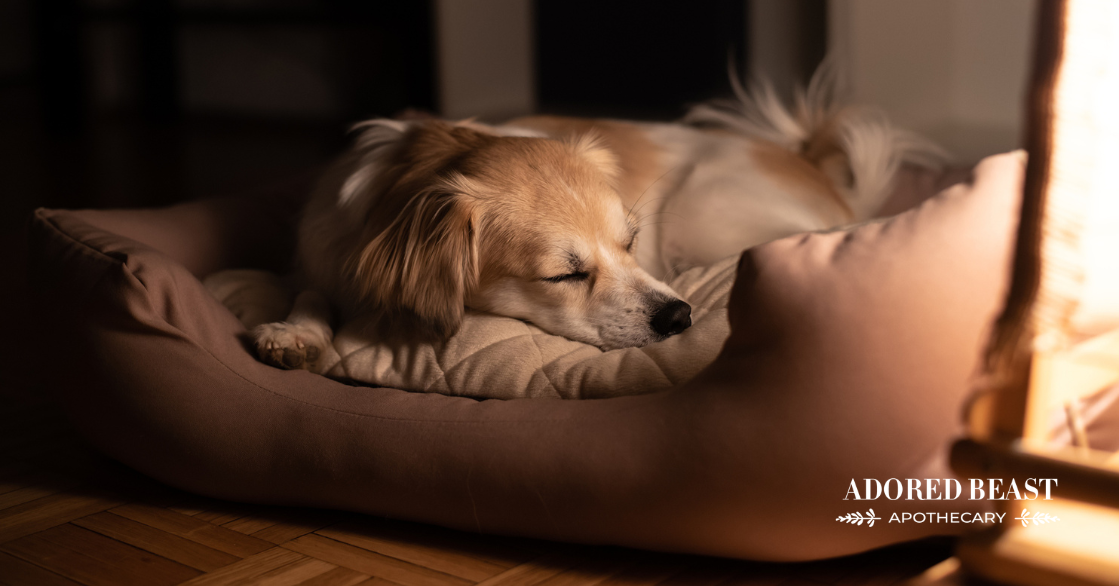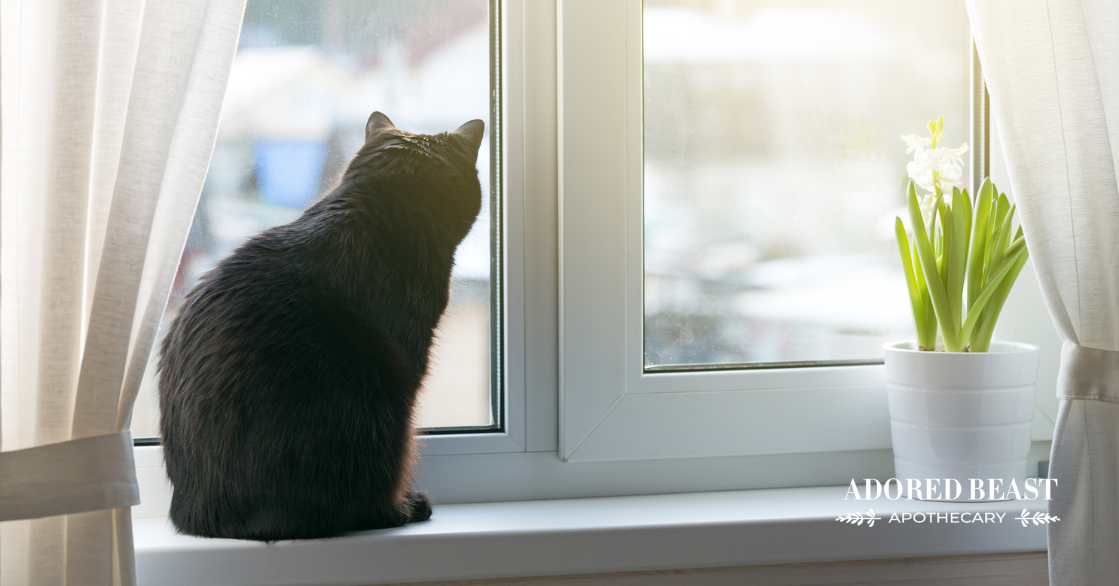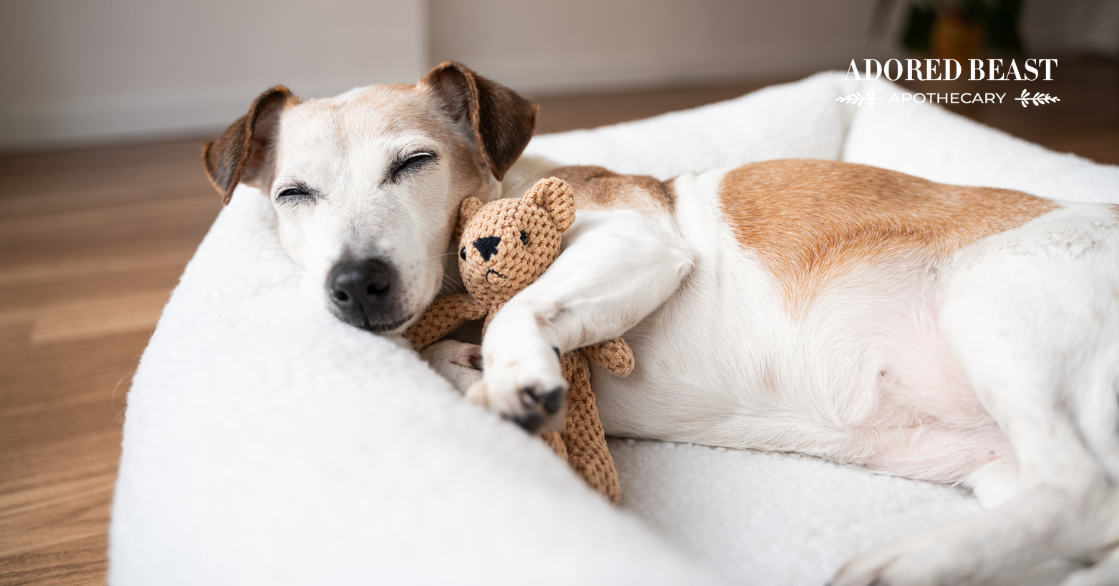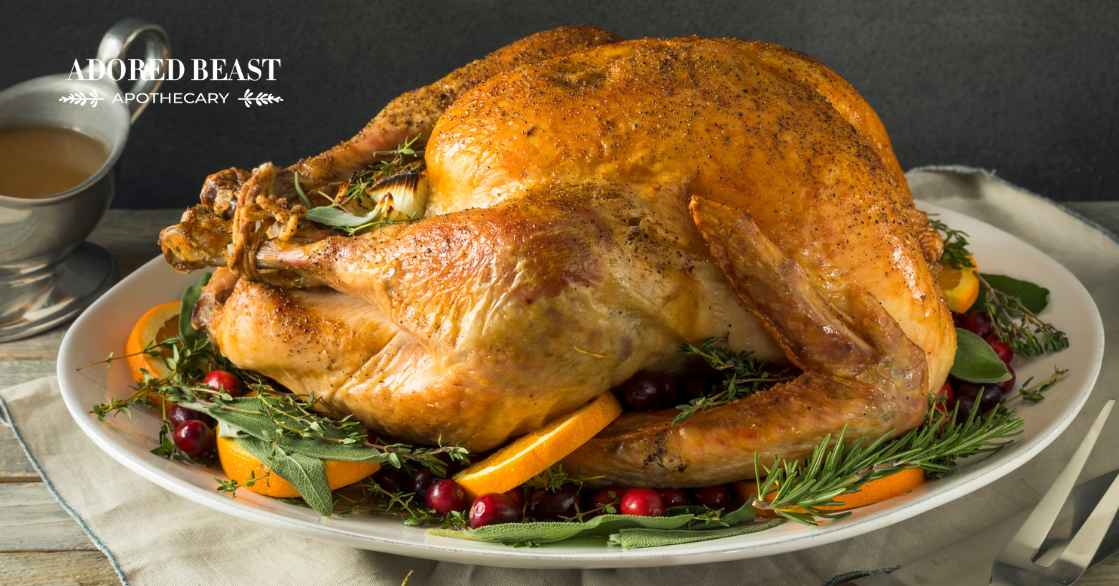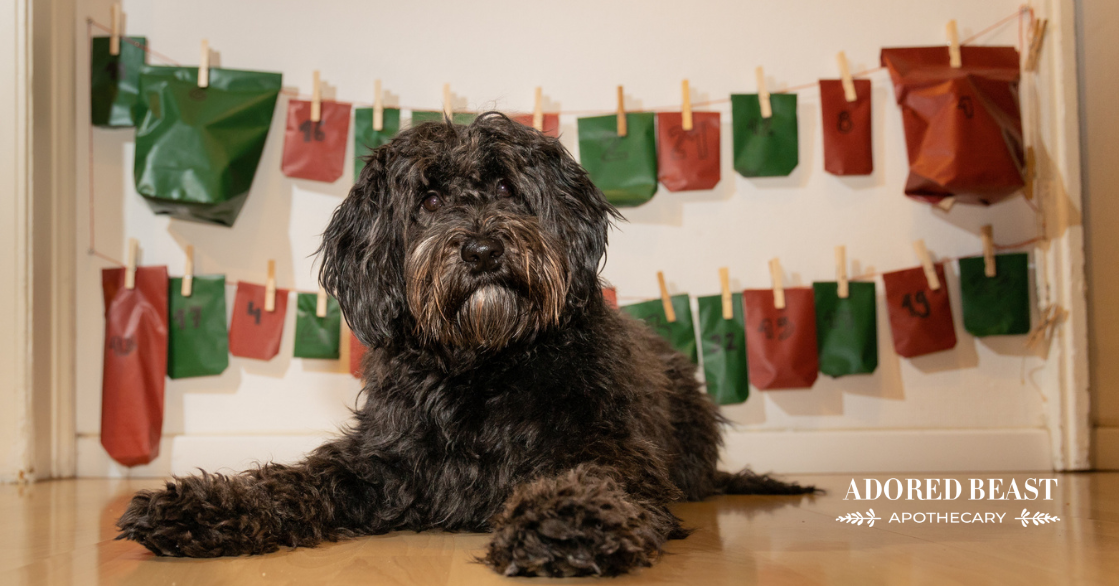A few months ago, our newest addition, Jones, had her first heat. We’ve been through heat cycles with other dogs before, so we had an idea of what to expect. That said, every dog is different, so we were ready for anything.
If you have a female dog who hasn’t been spayed, you’ll eventually find yourself navigating her heat cycle. It can be a confusing and even surprising experience, especially the first time. Even then, sometimes things are vastly different from one girl to the next. If you want to support your pup as she goes through this natural cycle, understanding what’s happening (and when) makes a world of difference.
What is Heat in Dogs?
When we say a dog is “in heat,” we’re talking about estrus – the part of a female dog’s reproductive cycle when she’s fertile and can become pregnant. Unlike humans, who ovulate on a regular monthly schedule, a female dog typically comes into heat about every 6 to 8 months, though this varies depending on age and breed.
The first heat usually happens between 6 and 24 months of age. For Jones, it was just about the 1 year mark. Small-breed dogs often go into heat sooner than larger breeds.
The 4 Stages of the Heat Cycle
There are four stages to the heat cycle. Let’s break down each one so you’ll know what to look for and how to support your dog at each phase.
1. Proestrus (The Beginning)
- Duration: About 7–10 days
- What Happens: Hormonal changes begin. Her body is getting ready to mate, but she’s not receptive to males yet.
- Signs:
- Swollen vulva
- Bloody discharge
- Increased urination
- Clinginess or moodiness
- Licking the genital area more often
- Attracts males, but will not allow mating
2. Estrus (The Fertile Phase)
- Duration: 5–10 days
- What Happens: This is when she can get pregnant. She becomes receptive to males.
- Signs:
- Discharge may lighten (pinkish or straw-coloured)
- Vulva remains swollen
- Flagging tail (moving it to the side to indicate she’s ready to mate)
- Flirtatious behaviour toward male dogs
- Restlessness or roaming instincts
3. Diestrus (Post-Heat)
- Duration: 2–3 months
- What Happens: Her body returns to normal if she’s not pregnant. If she is pregnant, this is the gestation period.
- Signs:
- Vulva swelling decreases
- No more discharge
- Less interest in males
- Hormones remain elevated, which is why phantom pregnancies can happen (more on that below!)
4. Anestrus (Resting Phase)
- Duration: About 4–6 months
- What Happens: This is the period between cycles when her reproductive system rests.
Odd Things You Might Notice
Every dog is different, and sometimes the heat cycle comes with some unexpected behaviours or symptoms:
- False pregnancy: Some dogs may show signs of pregnancy (nesting, nursing toys, even milk production) even if they weren’t bred.
- Mood swings: Your normally sweet pup might be extra cuddly – or extra cranky.
- Marking territory: Increased urination, even in the house.
- Escaping: Some dogs will try to sneak out to find a mate.
- Appetite changes: Some dogs eat less, others eat more.
- Increased vocalization: Whining, howling, or barking at night can be common.
How to Support a Dog in Heat
Helping your dog through her cycle means a little extra patience and preparation. Remember, this won’t last forever!
- Give Her Space and Comfort. Provide a quiet, cozy space where she can rest. Be gentle – her body is going through a lot.
- Manage the Mess. Let’s be real – this can be a messy time. And some dogs are messier than others. Use doggy diapers or pads if she’s bleeding in the house. Keep sheets and blankets (things you can wash) on furniture to protect it. Wash bedding and clean floors regularly to prevent staining and odours.
- Keep Her Safe. Never leave her outside alone – even in a fenced yard. Male dogs can be incredibly persistent, and some will go to great lengths to get to a female in heat. Opt for leash walks only, and if there are a lot of dogs in your area, perhaps try a different area for walks, or go at times that are less busy. Don’t trust her off-leash, even if she’s normally great with recall.
- Distract and Engage. Offer puzzle toys, chew treats, and games to keep her mind busy. Gentle play and interaction can help soothe anxiety and restlessness.
- Be Patient with Mood Changes. She might be grumpy or unusually needy. Jones is an affectionate dog, and is prone to whining, but with her heat she was even more so. Avoid scolding and offer calm reassurance.
- Be Cautious with Other Dogs. When a female is in heat, other dogs can react in a variety of ways. Some may try to mount, or get a bit wiley, so be aware. We were watchful and careful with Jones, but thankfully, Indi did not seem to care, at all. Be mindful that some dogs may not react super well, so just be careful.
- Monitor for Complications. Watch for signs of infection (e.g., foul-smelling discharge, lethargy, loss of appetite). If anything seems off, check with your vet.
Helpful Foods and Supplements for Dogs in Heat
While there’s no miracle food to “cure” the heat cycle (it’s a natural process), there are definitely foods and supplements that can help support a dog’s hormonal balance, comfort, and mood during this time. Here’s what to consider:
1. Omega-3 Fatty Acids (Fish Oil, Flaxseed)
- Why it helps: Omega-3s support the nervous system and can reduce inflammation, which may ease any discomfort or crankiness your dog is feeling.
- How to use: Choose a high-quality supplement (with no added vitamin D or flavourings). Start with the recommended dose based on your dog’s weight. We use our Potent-Sea Omega-3!
2. Chamomile
- Why it helps: Known for its calming properties, chamomile can ease anxiety, irritability, and even mild cramping.
- How to use: Brew a batch of chamomile tea and let it cool. You can add this to her regular food or offer it on its own, a few tablespoons at a time.
3. Pumpkin
- Why it helps: Heat can sometimes disrupt a dog’s digestion. Pumpkin is a fiber-rich food that supports healthy bowel movements and is gentle on the stomach.
- How to use: Add 1–2 tablespoons of plain, cooked pumpkin to her meals.
4. Probiotics
- Why they help: Hormonal changes can affect gut health. Probiotics support digestion, immunity, and overall wellness.
- How to use: Choose a dog-specific probiotic or a blend that includes a variety of different strains. We rotate probiotics for Jones (and her sister), but we chose Gut Soothe for her heat cycle, particularly for the soothing herbs and neutraceuticals.
5. CBD (Cannabidiol)
- Why it helps: For dogs who become very anxious or uncomfortable, CBD may help ease stress, restlessness, and mild pain.
- How to use: Use a dog-specific CBD oil with a clear dosing guide. Always consult your vet, especially if your dog is on other medications.
6. Your Go 2
- Why it helps: Your Go 2 is a combination of homeopathic arnica and aconite. It can help with calming and discomfort.
- How to use: You can use it several times a day, and just give it to her by mouth or in her water.
Other tips:
- Avoid processed treats and foods with synthetic hormones or dyes – they can interfere with hormonal balance.
- Hydration is important. If your dog is drinking less due to discomfort, consider offering bone broth for added nutrients and flavour.
Dealing with a dog in heat takes commitment. We will eventually spay Jones, but not until she is several years old to allow her to grow fully, just as we did with Indi. So that means we have a few more cycles to get through. And that’s ok, we manage just fine with a little patience and lots of natural cleaner.
If this is your first foray, understanding your dog’s heat cycle should help you stay calm, prepared, and compassionate. It’s not always convenient, but it’s completely natural, and your dog is counting on you for a little extra TLC.

